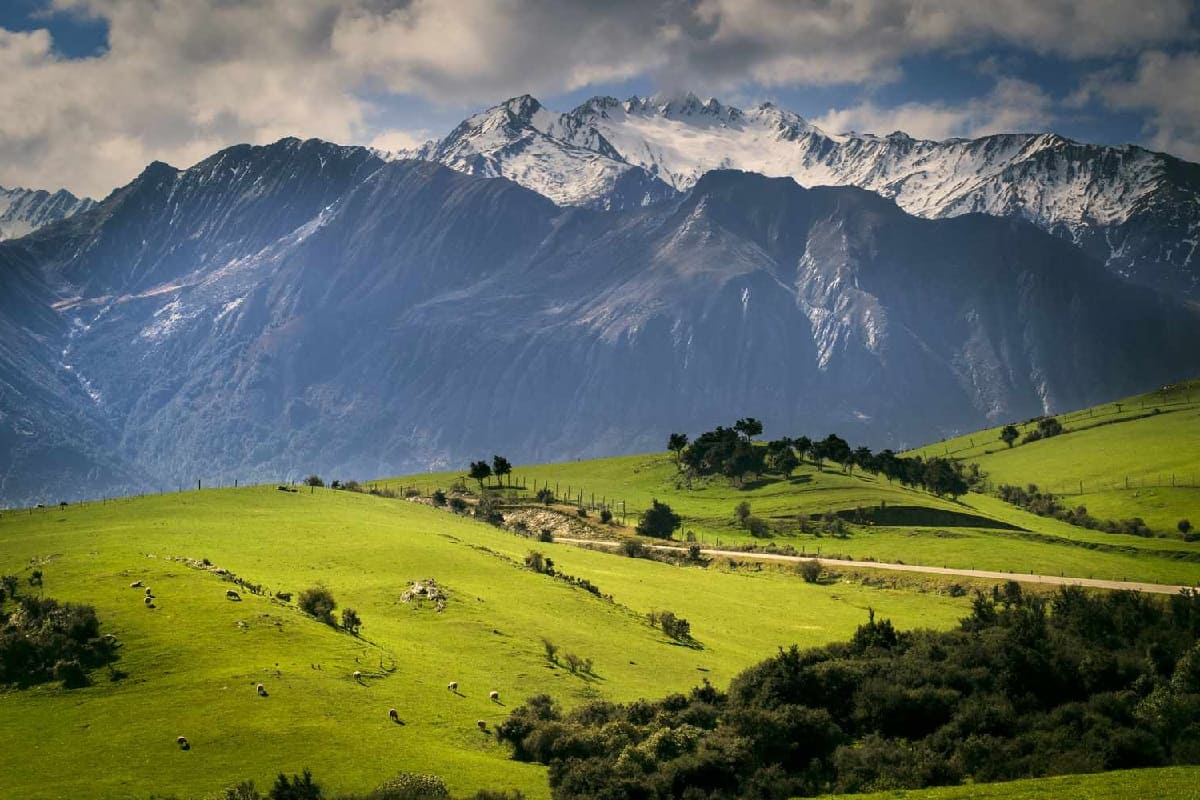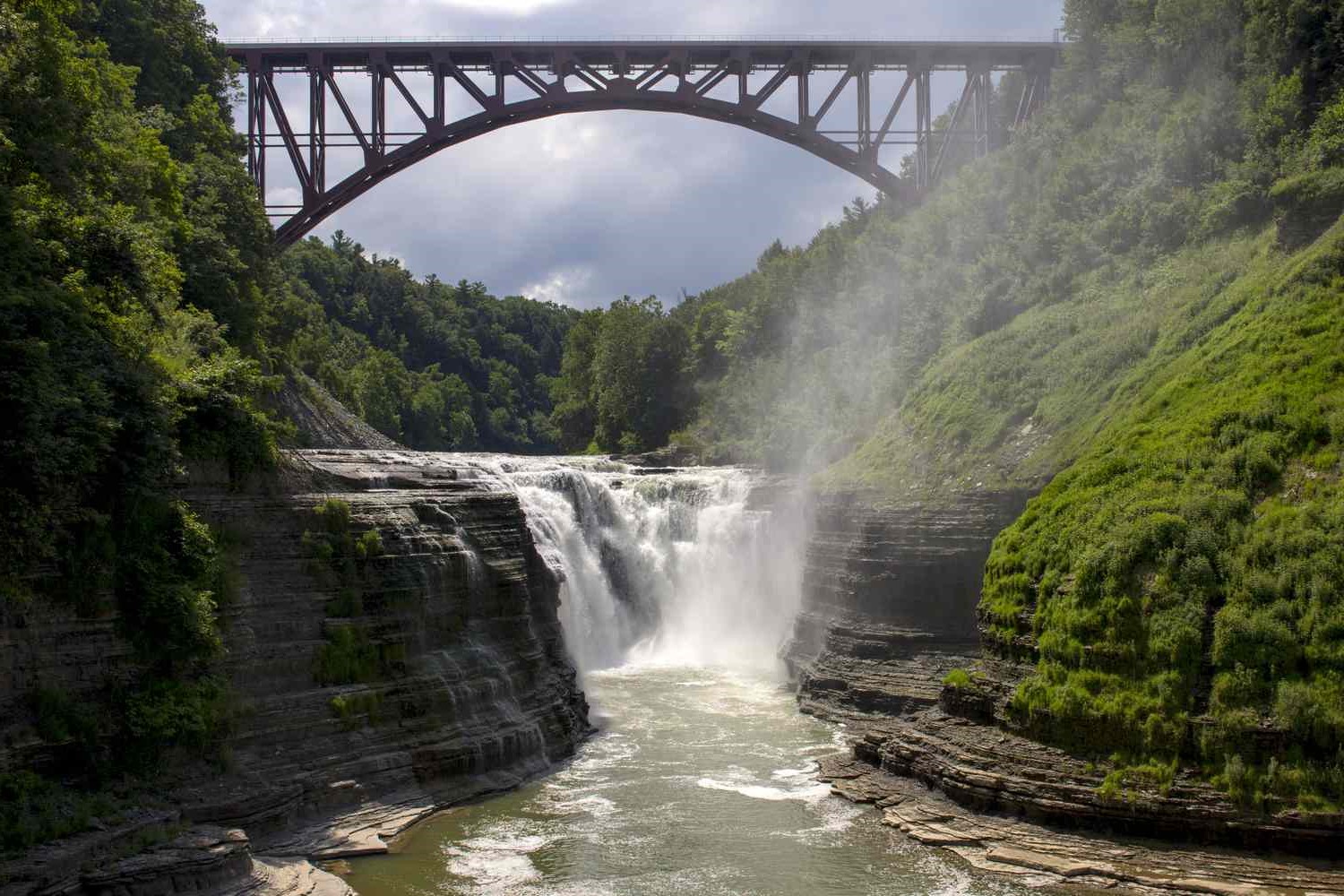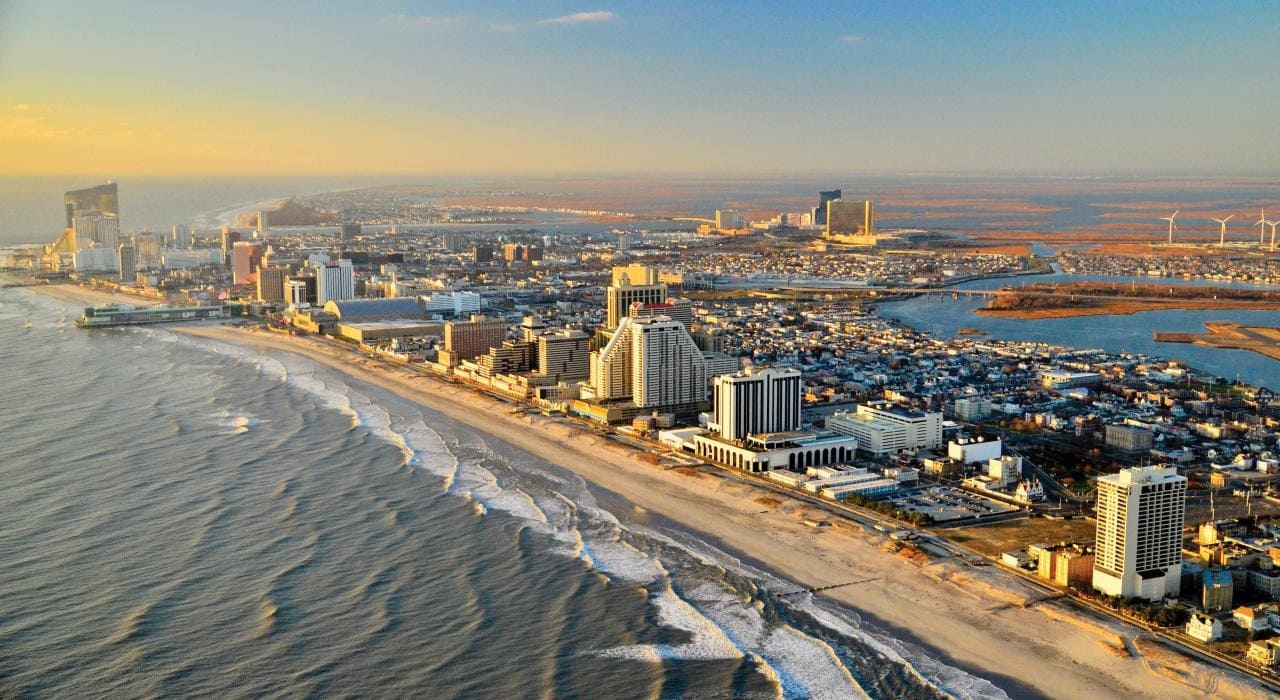Home>Weather and Climate>Average Temperatures In New Brunswick


Weather and Climate
Average Temperatures In New Brunswick
Published: March 7, 2024
Discover the average temperatures in New Brunswick and learn about the weather and climate in this region. Plan your visit with insights on the local climate conditions.
(Many of the links in this article redirect to a specific reviewed product. Your purchase of these products through affiliate links helps to generate commission for Temperatures.com, at no extra cost. Learn more)
Table of Contents
Introduction
New Brunswick, a province located on the eastern coast of Canada, boasts a diverse and captivating climate that significantly influences the daily lives of its residents. From the serene beauty of its coastal regions to the lushness of its inland areas, New Brunswick's climate plays a pivotal role in shaping the experiences of its inhabitants and visitors alike. Understanding the average temperatures in New Brunswick is crucial for anyone looking to explore or settle in this picturesque province.
The province's climate is characterized by its variability, with distinct seasonal changes that bring a rich tapestry of weather patterns throughout the year. From the crisp, snow-laden winters to the balmy, sun-kissed summers, New Brunswick offers a wide spectrum of temperature experiences that cater to a myriad of preferences. Whether one is drawn to the tranquility of a snowy landscape or the vibrancy of a summer beach, New Brunswick's climate has something for everyone.
Exploring the average temperatures in New Brunswick provides valuable insights into the rhythm of life in this region. It allows for a deeper understanding of the seasonal nuances that shape the activities and traditions of its inhabitants. Moreover, for those considering a visit or a more permanent stay in New Brunswick, having a grasp of the typical temperature ranges can inform decisions regarding the best times to partake in outdoor adventures, attend local festivals, or simply bask in the natural splendor that the province has to offer.
As we delve into the intricacies of New Brunswick's average temperatures, we will uncover the unique characteristics of each season, delve into historical temperature trends, and examine the various factors that contribute to the province's diverse climate. By gaining a comprehensive understanding of the average temperatures in New Brunswick, one can truly appreciate the dynamic interplay between nature and human life in this captivating province.
Read more: New York Monthly Average Temperatures Guide
Climate Overview
New Brunswick's climate is a captivating tapestry of seasonal variations, offering a diverse and ever-changing meteorological landscape throughout the year. Situated on the eastern coast of Canada, the province experiences a blend of maritime and continental influences, resulting in a climate that is both dynamic and distinctive. The interplay of these influences gives rise to a climate that is characterized by its variability, with each season bringing forth a unique set of weather patterns and temperature ranges.
The province experiences four distinct seasons, each contributing to the rich tapestry of New Brunswick's climate. Winters are marked by crisp temperatures and ample snowfall, creating a picturesque winter wonderland that is ideal for outdoor activities such as skiing, snowshoeing, and ice skating. As the winter transitions into spring, the landscape comes alive with the vibrant colors of blooming flora, accompanied by milder temperatures that beckon the return of outdoor pursuits.
Summer in New Brunswick brings warm, sunny days that are perfect for exploring the province's stunning coastal areas, partaking in water-based activities, and enjoying the abundance of outdoor festivals and events. The fall season paints the province in a breathtaking array of autumnal hues, as the foliage transforms into a mesmerizing display of reds, oranges, and yellows. The crisp, cool air of autumn provides an ideal backdrop for scenic drives, hiking adventures, and harvest-themed festivities.
The province's climate is also influenced by its proximity to the Atlantic Ocean, which moderates temperatures and contributes to the formation of fog along the coast. This maritime influence infuses the climate with a degree of humidity, particularly during the summer months, creating a comfortable environment for outdoor recreation and leisure.
Overall, New Brunswick's climate offers a captivating blend of seasonal experiences, each contributing to the province's unique charm and appeal. By embracing the ebb and flow of its climate, residents and visitors alike have the opportunity to immerse themselves in a rich tapestry of weather patterns and temperature fluctuations, each adding depth and character to the province's natural beauty.
Seasonal Temperatures
New Brunswick experiences a diverse range of temperatures across its four distinct seasons, each contributing to the province's unique and ever-changing climate.
Winter in New Brunswick is characterized by cold temperatures, with average highs ranging from -6°C to -1°C (21°F to 30°F) and average lows falling between -16°C to -8°C (3°F to 18°F). The province receives significant snowfall during this season, transforming the landscape into a glistening winter wonderland that is ideal for a variety of outdoor activities.
As spring emerges, temperatures gradually rise, with average highs climbing to 6°C to 15°C (43°F to 59°F) and average lows ranging from -3°C to 4°C (26°F to 39°F). This transitional season brings a sense of renewal, with the melting snow giving way to budding flora and milder weather that sets the stage for outdoor adventures and nature exploration.
Summer in New Brunswick brings warm and pleasant temperatures, with average highs reaching 22°C to 26°C (72°F to 79°F) and average lows ranging from 11°C to 15°C (52°F to 59°F). This season is perfect for enjoying the province's stunning coastal areas, engaging in water-based activities, and partaking in the abundance of outdoor festivals and events.
As autumn unfolds, temperatures begin to cool, with average highs ranging from 10°C to 17°C (50°F to 63°F) and average lows falling between 1°C to 7°C (34°F to 45°F). The landscape transforms into a breathtaking display of vibrant autumnal colors, offering an ideal backdrop for scenic drives, hiking adventures, and harvest-themed festivities.
These seasonal temperature variations contribute to the rich tapestry of experiences that New Brunswick has to offer, each season bringing its own unique charm and opportunities for outdoor exploration and enjoyment. Whether it's the exhilarating activities of winter, the vibrant renewal of spring, the sun-drenched leisure of summer, or the picturesque beauty of autumn, New Brunswick's seasonal temperatures play a pivotal role in shaping the province's allure and appeal.
Historical Temperature Trends
Historical temperature trends in New Brunswick provide valuable insights into the province's climatic patterns and the long-term fluctuations in temperature over the years. By examining historical temperature data, we can gain a deeper understanding of how the climate has evolved and identify potential trends that may have implications for the future.
Over the past century, New Brunswick has experienced notable shifts in temperature patterns, reflecting the complex interplay of natural climatic variability and potential influences from broader environmental factors. Historical records indicate that the province has witnessed fluctuations in both average annual temperatures and seasonal temperature profiles, offering a nuanced perspective on the dynamic nature of its climate.
In recent decades, there has been a discernible trend towards milder winter temperatures in New Brunswick, with reduced frequency of extreme cold spells and milder average temperatures during the winter months. This shift has implications for various aspects of life in the province, including impacts on winter recreational activities, energy consumption, and ecological dynamics.
Conversely, the summer season has exhibited trends towards slightly warmer temperatures, with an increase in the frequency of hot days and extended periods of heat. These trends align with broader global patterns of rising temperatures, highlighting the interconnected nature of New Brunswick's climate with larger-scale climatic phenomena.
Furthermore, historical temperature data reveals variations in the timing and duration of seasonal transitions, with potential implications for agricultural practices, ecological processes, and overall societal rhythms. Understanding these historical temperature trends equips us with valuable knowledge to adapt to potential future shifts in the climate and to implement strategies for resilience and sustainability.
By delving into the historical temperature trends of New Brunswick, we gain a deeper appreciation for the dynamic nature of its climate and the intricate interplay of factors that shape its temperature patterns. This historical perspective serves as a valuable foundation for understanding the province's climate dynamics and informs proactive measures to address potential impacts of future temperature trends.
The historical temperature trends in New Brunswick underscore the importance of ongoing monitoring and research to track climate variability and facilitate informed decision-making in the face of potential climate changes. As we continue to unravel the historical temperature trends and their implications, we are better equipped to embrace the evolving climate of New Brunswick and foster a resilient and adaptive approach to the province's climatic dynamics.
Factors Affecting Temperatures
The temperatures experienced in New Brunswick are influenced by a myriad of factors, each contributing to the province's diverse and ever-changing climate. These factors encompass a broad spectrum of natural and environmental elements that collectively shape the temperature patterns observed across the region.
-
Geographical Location: New Brunswick's position on the eastern coast of Canada exposes it to a blend of maritime and continental influences. The proximity to the Atlantic Ocean moderates temperatures, particularly along the coast, while inland areas experience more pronounced continental effects, leading to variations in temperature profiles across the province.
-
Topography: The province's diverse topography, encompassing coastal regions, river valleys, and forested landscapes, influences local temperature patterns. Coastal areas may experience milder temperatures due to the moderating influence of the ocean, while inland regions may exhibit more pronounced temperature fluctuations, especially during winter and summer.
-
Oceanic Influence: The presence of the Atlantic Ocean plays a pivotal role in shaping New Brunswick's climate. The maritime influence contributes to increased humidity levels, particularly during the summer months, creating a more temperate environment along the coast and influencing temperature and precipitation patterns.
-
Air Masses: The movement of air masses, influenced by prevailing wind patterns, contributes to temperature variations in New Brunswick. The interaction of polar and tropical air masses, influenced by seasonal shifts and weather systems, impacts the temperature profiles experienced across the province.
-
Elevation: The elevation of certain regions within New Brunswick can significantly impact local temperatures. Higher elevations may experience cooler temperatures, particularly during the summer months, while low-lying areas may exhibit warmer conditions, contributing to microclimatic variations within the province.
-
Vegetation and Land Use: The distribution of vegetation and land use practices can influence local temperature patterns. Urban areas, characterized by extensive infrastructure and reduced green spaces, may exhibit higher temperatures compared to rural and forested areas, a phenomenon known as the urban heat island effect.
-
Climate Change: The overarching influence of climate change is increasingly shaping temperature patterns globally, including in New Brunswick. Long-term shifts in temperature profiles, attributed to broader climatic phenomena, underscore the evolving nature of the province's climate and its susceptibility to external environmental factors.
Understanding the multifaceted factors that affect temperatures in New Brunswick provides valuable insights into the province's climatic dynamics and the intricate interplay of natural and environmental elements. By recognizing the diverse influences that shape temperature patterns, we gain a deeper appreciation for the complexity of New Brunswick's climate and the need for proactive measures to address potential impacts and foster resilience in the face of evolving temperature dynamics.
Conclusion
In conclusion, the average temperatures in New Brunswick paint a vivid portrait of the province's dynamic and diverse climate. From the crisp embrace of winter to the balmy allure of summer, New Brunswick's seasonal temperatures offer a rich tapestry of experiences that shape the lives of its residents and the adventures of its visitors. The interplay of maritime and continental influences, coupled with the province's geographical and environmental factors, contributes to a climate that is both captivating and ever-changing.
The seasonal temperature variations in New Brunswick, ranging from the snow-laden winters with their picturesque landscapes to the vibrant hues of autumn, provide a spectrum of opportunities for outdoor exploration, cultural festivities, and natural marvels. Understanding the historical temperature trends equips us with valuable insights into the evolving nature of the province's climate, fostering a proactive approach to addressing potential impacts and embracing resilience in the face of climatic dynamics.
Moreover, the multifaceted factors that influence temperatures in New Brunswick, including geographical location, topography, oceanic influence, air masses, elevation, vegetation, land use, and the overarching influence of climate change, underscore the intricate interplay of natural and environmental elements that shape the province's temperature patterns. By recognizing these influences, we gain a deeper appreciation for the complexity of New Brunswick's climate and the need for adaptive strategies to address potential impacts and foster sustainability.
As we embrace the average temperatures in New Brunswick, we embark on a journey through the province's climatic tapestry, where each season unfolds with its own unique charm and opportunities for exploration. Whether it's the tranquility of a winter wonderland, the vibrancy of spring's renewal, the leisure of summer's warmth, or the picturesque beauty of autumn, New Brunswick's climate offers a captivating array of experiences that enrich the lives of its inhabitants and captivate the hearts of its visitors.
In essence, the average temperatures in New Brunswick serve as a testament to the province's natural splendor and the enduring interplay between climate and human experiences. By delving into the nuances of its climate, we gain a deeper understanding of the province's allure and the profound connection between its temperature patterns and the rhythm of life within its borders. As we continue to appreciate and adapt to the ever-changing climate of New Brunswick, we embrace the province's resilience and the enduring beauty of its climatic dynamics.














